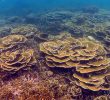DAVAO CITY — The amount of garbage collected in Mt. Apo is decreasing.
Nilo Rivera, chief of the Protected Areas and Wildlife Division of the Department of Environment and Natural Resources (DENR) and member of the Protected Areas Management Board (PAMB), estimated that garbage collected from the country’s highest peak in 2009 will be at around 100 to 200 kilos
This is less than the 300 kilos of garbage collected in 2008.
Speaking before the Kapihan sa Dabaw media forum, Rivera admitted that one of the reasons for the decline is the decreasing number of climbers due to economic reasons, as trails are now collecting entrance fees. The Kapatagan trail, for example, collects 600 pesos for each climber.
There is also transportation and food expenses plus porter fees. In all, a climber is estimated to cough up at least 1, 500 pesos for each climb.
However, he said that the PAMB, through the local community, is also doing something to decrease garbage left Mt. Apo, which is a protected area, and thus help preserve it.
One of the PAMB programs is facilitating the collection of the man-made garbage in and around Mt. Apo’s peak by buying these wastes from collectors particularly the porters. According to Rivera, this program began in 2007. For that year, they collected a ton of garbage in the mountain and paid a total of 10,000 pesos for the amount collected.
The PAMB pays at least ten pesos per kilo for the garbage collected. The wastes are collected from the peak then carried to Lake Venado where they are hauled to Barangay Ilomavis before being transported to Kidapawan City for proper disposal.
Most of the garbage collected is composed of used bottles and plastic bags.
The garbage collection is done twice annually, the first after the Lenten climb and the other after the October trek. These collections coincide with the two climbing seasons. Aside from the PAMB garbage collection, there are other garbage clean-up efforts conducted by different groups and organizations and also the local communities themselves. (PIA XI)









